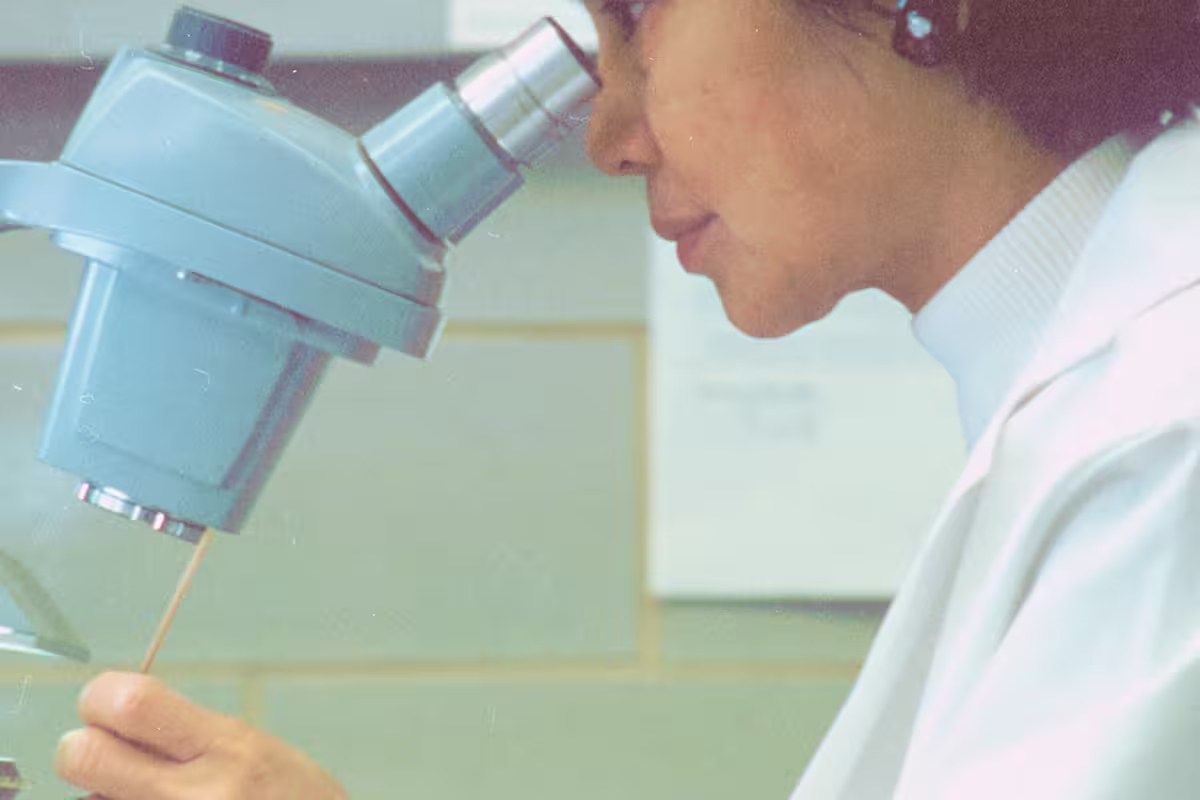

Lactobacillus Jensenii: Benefits for the Vaginal Microbiome and Women’s Health
Discover how Lactobacillus jensenii supports vaginal health, balances pH, prevents infections, and promotes a resilient microbiome.
Words by Olivia Cassano
Scientifically edited by Dr. Krystal Thomas-White, PhD
Medically reviewed by Dr. Kate McLean MD, MPH, FACOG
When it comes to vaginal health, the tiniest organisms can make the biggest difference. Among the many beneficial bacteria that live in the vaginal microbiome, Lactobacillus jensenii stands out as a small but mighty protector. This friendly bacterium helps keep your vaginal environment balanced, defending against infections while supporting overall wellness.
Let’s explore what makes Lactobacillus jensenii so special, how it compares to other bacterial strains, and what you can do to support it naturally.
What is Lactobacillus jensenii?
L. jensenii is one of the main lactic acid–producing bacteria found in a healthy vaginal microbiome. Alongside other protective bacterial species like Lactobacillus crispatus and Lactobacillus gasseri, it plays a vital role in maintaining balance and preventing infections.
This species was first identified decades ago as a naturally occurring part of the vaginal flora, and research has since confirmed just how important it is. L. jensenii thrives in the vagina, where it attaches to the vaginal epithelial cells and forms a protective barrier. From there, it produces lactic acid, a compound that keeps the vaginal environment mildly acidic, typically between a pH of 3.5 and 4.2.
That acidity acts as a built-in defense system that discourages harmful bacteria, yeast, and viruses from overgrowing. Because of its ability to maintain this protective environment, L. jensenii is considered one of the “good guys” in the vaginal microbiome. It helps your body stay in balance naturally, protecting against infections and inflammation.

Recurrent symptoms? Get Evvy's at-home vaginal microbiome test, designed by leading OB-GYNs.
Key benefits of Lactobacillus jensenii for vaginal health
Studies show that L. jensenii offers several key benefits for vaginal and urinary health. Let’s take a closer look at what it does and why this microscopic friend should be on your radar.
Helps maintain acidic vaginal pH
A healthy vagina needs a slightly acidic environment to stay balanced. L. jensenii produces moderate to high levels of lactic acid, which helps lower and stabilize vaginal pH around 3.8–4.5. This acidity acts as a natural shield, preventing overgrowth of unwanted microbes like Gardnerella vaginalis, which is linked to bacterial vaginosis (BV), and Candida albicans, the fungus responsible for yeast infections. By keeping pH in check, L. jensenii supports a stable and protective environment.
Produces antimicrobial substances to inhibit pathogens
Beyond lactic acid, L. jensenii makes antimicrobial peptides called bacteriocins. These compounds directly inhibit pathogen colonization, which can disrupt vaginal balance. Bacteriocins can block the growth of BV-related bacteria and promote a healthy microbiome. This built-in antimicrobial activity gives L. jensenii a key role in defending the vaginal flora.
Protects against bacterial vaginosis and yeast infections
Because of its acidity and antimicrobial properties, L. jensenii helps prevent common vaginal infections. It forms a physical and biochemical barrier on vaginal epithelial cells, which keeps pathogenic bacteria from sticking or forming biofilms — a strategy harmful bacteria use to survive and cause recurrent infections. When L. jensenii levels are high, you’re less likely to experience bacterial vaginosis or yeast infections.
Supports vaginal immune system balance
The vagina isn’t just a passive environment; it has an active immune system that protects against infection. L. jensenii helps regulate that system by reducing inflammation and promoting balance. It can lower levels of inflammatory molecules, helping prevent chronic irritation and maintaining a healthy environment.
Contributes to a healthy vaginal microbiome composition
Think of L. jensenii as a team player. It often works alongside other protective Lactobacillus species, such as L. crispatus and L. gasseri, to create a strong and stable vaginal microbiome. Together, these species help prevent overgrowth of opportunistic microbes and restore balance after disturbances — like antibiotics, hormonal shifts, sexual activity, or infections.
Helps prevent urinary tract infections (UTIs)
The vagina and urinary tract are closely linked, which means that the bacteria in one area can influence the other. Research suggests that L. jensenii might help keep urinary tract infections at bay. It does this by both inhibiting the growth of uropathogens as well as outcompeting harmful bacteria that could make their way up into the urinary tract. Plus, L. jensenii produces beneficial substances like hydrogen peroxide and lactic acid, which create a less inviting environment for germs that cause infections.
Overall, L. jensenii acts as both a guardian and a stabilizer. It helps maintain vaginal acidity, blocks pathogens, regulates immunity, and promotes long-term balance, like a true multitasker for your vaginal health.
How Lactobacillus jensenii compares to other Lactobacillus strains
Not all vaginal Lactobacillus species are the same. Each has unique traits that help shape the vaginal flora. While L. jensenii shares many protective functions with its close relatives, it stands out for its adaptability and antimicrobial potential.
For example, L. crispatus is often considered the “gold standard” of vaginal health because it produces large amounts of both L- and D-lactic acid isomers and tends to dominate in very stable, healthy microbiomes. L. jensenii, on the other hand, only produces L-lactic acid isomers, which help maintain pH stability and prevent infection.
It also generates hydrogen peroxide, another antimicrobial compound that discourages the growth of pathogens. While L. jensenii may not always be the dominant species, it frequently coexists with others to provide ongoing protection, even in transitional or mildly unbalanced states.
One of the most interesting things about L. jensenii is its metabolic flexibility. It can break down a variety of sugars like maltose, trehalose, and glucose, which helps it survive in different conditions within the vaginal and urinary tracts. Genomic research also shows that L. jensenii has unique genes related to energy metabolism and surface proteins, giving it strong colonization abilities and adaptability.
So, while L. jensenii might not always take center stage, it’s a dependable “backup singer” because it’s steady, supportive, and crucial to maintaining balance in the vaginal microbiome.
How to restore or support Lactobacillus jensenii
If your vaginal microbiome becomes imbalanced, your L. jensenii levels might drop. The good news is, you can support this beneficial species naturally through a combination of probiotics, diet, and lifestyle habits.
Probiotics
Some vaginal or oral probiotic formulations include Lactobacillus jensenii strains specifically designed to help restore balance. These probiotics can be particularly useful after antibiotic treatment or recurrent bacterial vaginosis or yeast infections. Even if the product doesn’t list L. jensenii by name, formulations that include a mix of vaginal Lactobacillus species (like L. crispatus, L. gasseri, and L. rhamnosus) can still encourage its growth through synergy.
Evvy’s Women’s Complete Probiotic and Vaginal Probiotic Suppositories are designed with these principles in mind. They’re formulated to help support and restore a healthy vaginal microbiome by promoting the growth of protective species like L. jensenii.
Diet
Your diet can influence your vaginal microbiome, too. Foods rich in prebiotic fiber — like garlic, oats, bananas, onions, and asparagus — help feed beneficial bacteria that live in the gastrointestinal tract, which can influence your vaginal microbiota, too. Fermented foods such as yogurt, kefir, kimchi, and sauerkraut also contain live cultures that may support good bacteria. Staying hydrated and limiting high-sugar processed foods can further help by reducing yeast overgrowth and inflammation.
Lifestyle
A few simple lifestyle habits can help maintain healthy Lactobacillus levels:
- Avoid douching, scented washes, or harsh soaps that disrupt vaginal pH.
- Practice safe sex and use a barrier method like condoms, as semen has a higher pH that can temporarily shift the vaginal environment. New research also shows that men can pass BV-causing bacteria to their female partners during unprotected sex.
- Avoid smoking, which has been linked to lower levels of protective Lactobacillus species and a higher risk of vaginal imbalance.
- Manage chronic stress, since ongoing stress can impact hormone balance and immunity (both of which influence the vaginal microbiome).
- Change period products frequently, especially tampons and pads, to prevent irritation and reduce the chance of unwanted bacterial growth.
Microbiome testing
If you’re curious about your vaginal bacteria, microbiome testing can give you personalized insights. Evvy’s Vaginal Microbiome Test analyzes the exact makeup of your vaginal flora, including how much L. jensenii you have. This information can help you understand your current balance and create a plan to restore or maintain optimal health.
How Evvy supports Lactobacillus jensenii
Using advanced metagenomic sequencing, Evvy’s Vaginal Microbiome Test measures the presence and abundance of hundreds of vaginal microbes, including L. jensenii. You’ll receive a personalized report that shows whether protective species like L. jensenii, L. crispatus, and L. gasseri are thriving or if potentially disruptive bacteria are taking over.
With that information, you and your healthcare provider can make more informed decisions about how to care for your vaginal health. Whether it’s exploring probiotics, adjusting your hygiene routine, or managing recurring infections, knowing your unique microbiome makeup is the first step toward lasting balance.
FAQs about Lactobacillus jensenii
What is Lactobacillus jensenii used for?
L. jensenii is primarily used to support vaginal and urinary health. It helps maintain an acidic environment, prevents harmful bacteria and yeast from growing, and can reduce the risk of bacterial vaginosis, yeast infections, and some UTIs. It’s also a key ingredient in certain probiotics designed to restore vaginal balance.
Is Lactobacillus jensenii good for fertility?
Yes, indirectly. A balanced vaginal microbiome dominated by beneficial Lactobacillus species (including L. jensenii) is linked to improved reproductive health and fertility outcomes. A healthy microbiome supports optimal cervical mucus, reduces inflammation, and lowers the risk of infections that can affect conception and pregnancy.
Does Lactobacillus jensenii prevent yeast infections?
It can help. L. jensenii creates an acidic environment that makes it harder for yeast, especially Candida albicans, to grow. It also produces antimicrobial compounds that directly inhibit yeast. While no bacteria can guarantee full protection, maintaining good L. jensenii levels lowers your risk of yeast overgrowth.
Can I take probiotics with Lactobacillus jensenii?
Yes. Probiotics that contain L. jensenii or other Lactobacillus species are generally safe and can help maintain balance. It’s best to choose products that have been clinically tested for vaginal health and to talk with your healthcare provider if you have recurring infections or are pregnant.
How do I know if I have enough Lactobacillus jensenii?
You can’t always tell by symptoms alone, but microbiome testing can provide clear answers. Evvy’s Vaginal Microbiome Test identifies the exact bacteria present in your vaginal flora, including L. jensenii. If your levels are low, you’ll receive insights and personalized recommendations to help restore balance.





